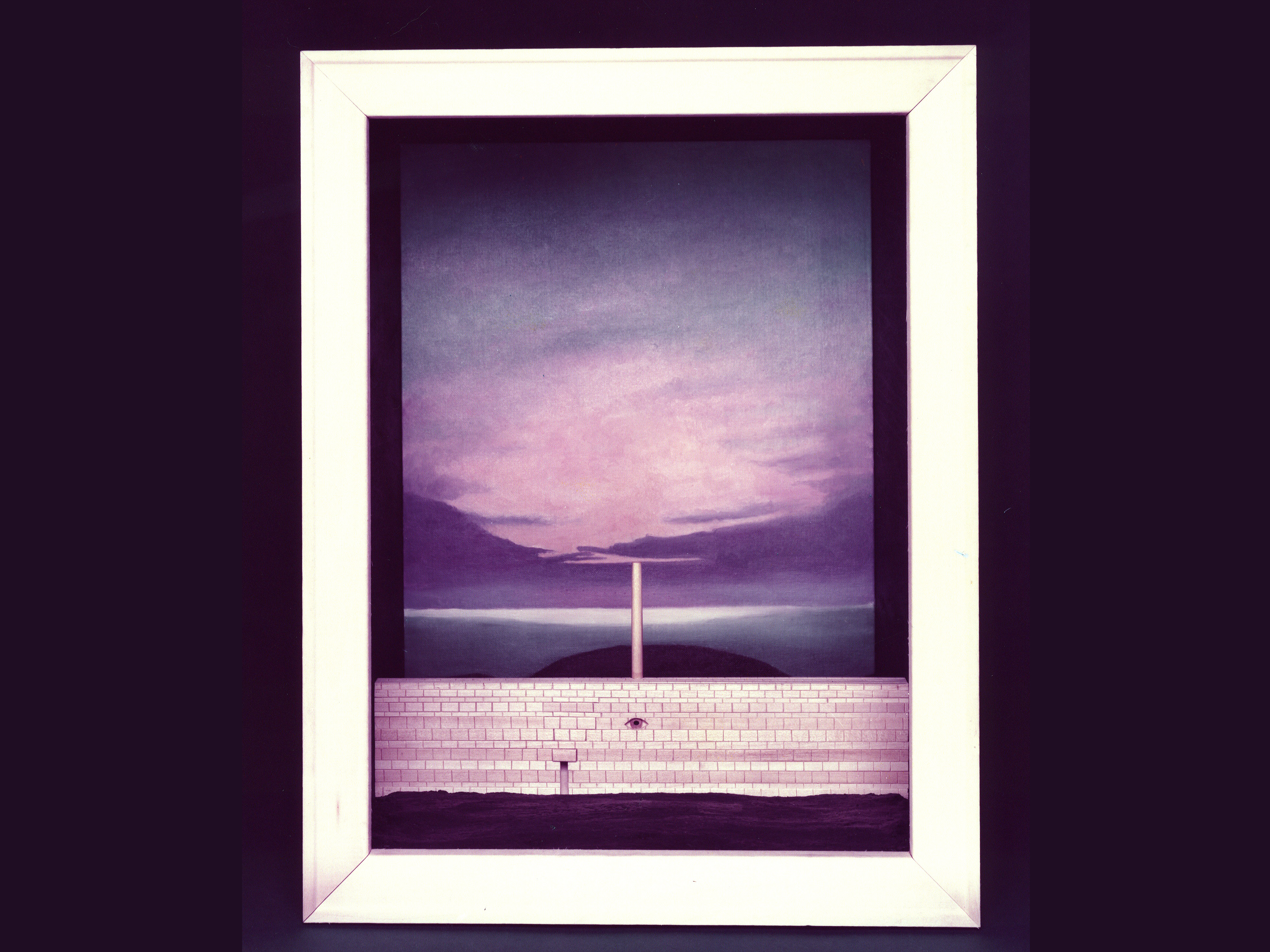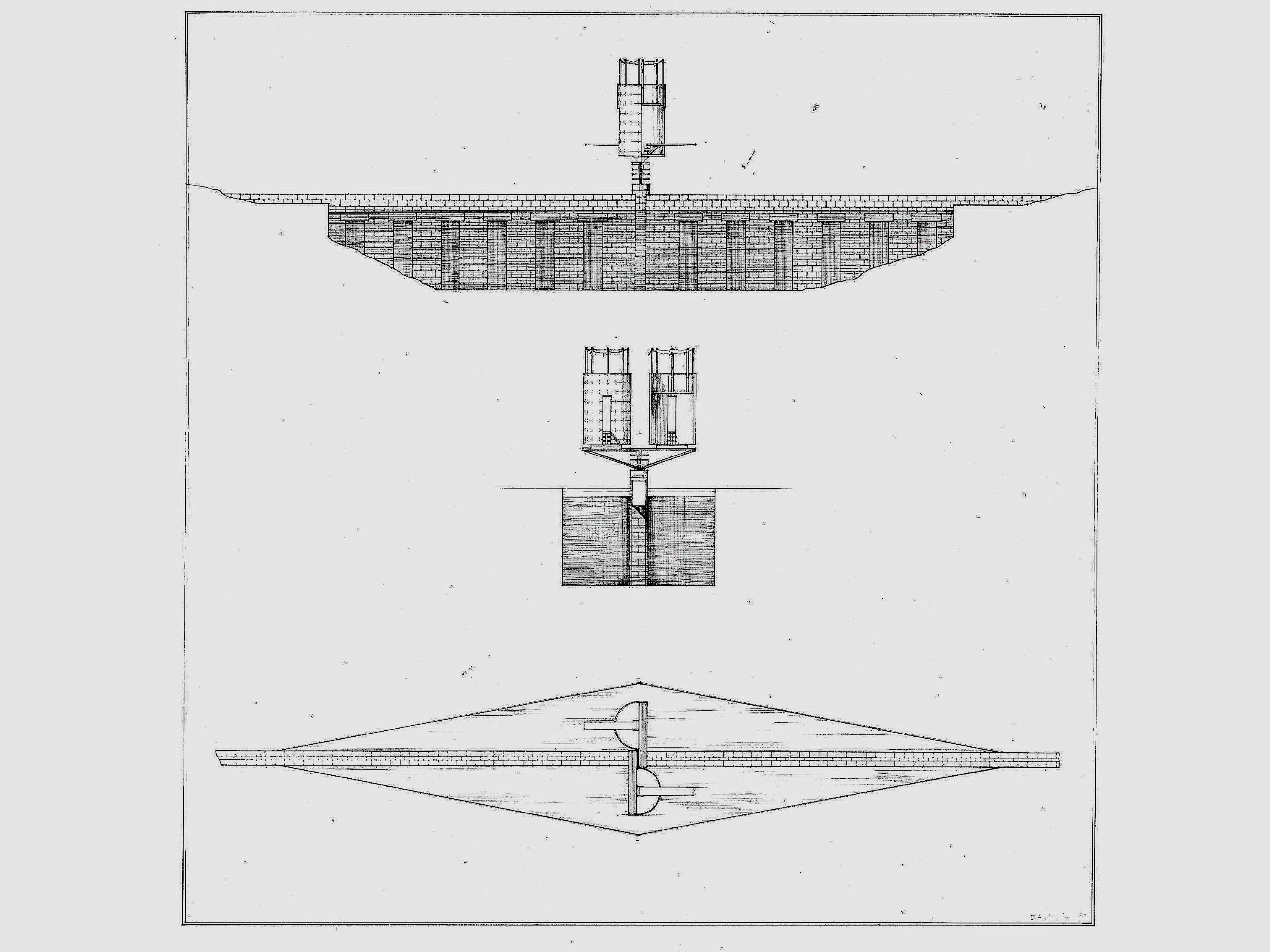The Forms of a Legend—Follies
1984






—J. L. Borges, ‘El Tiempo Circular’ in Historia de la Eternidad (1936), in Obras Completas (Buenos Aires: Emece Editores, 1974)
(read more)
Folly One: The Circular Time
Two identical panoramas, held by a metal frame anchored within an outdoor stone room, revolve around a fixed column. The interior view is of a tropical garden. The panoramas, fixed to the center pole by chain and gear, maintain a static view, periodically entering one’s field of vision as they revolve.The Wall and the Books
‘I read not long ago that the man who ordered the building of the almost infinite Chinese Wall was the first emperor, Shih Huang Ti, who also decreed the burning of all books written before his time. Perhaps the emperor wanted to re-create the beginning of time and called himself first in order to be really first. We might also suppose that the burning of the wall and the burning of the books are simultaneous acts. And so, depending on the order we chose, we should have the image of a king who began by destroying and then resigned himself to conserving; or the image of a disillusioned king who destroyed what he previously defended. Perhaps the wall was a metaphor. Men love the past and l am powerless against that love, and so are my executioners; but some day there will be a man who feels as I do and he will destroy the wall, as I have destroyed the books, and he will erase my memory and will be my shadow and my mirror and will not know it. Perhaps the burning of the libraries and the building of the wall are operations that secretly nullify each other.’
—J. L. Borges, ‘La Muralla y los Libros’ in Otras Inquisiciones (1952), in Obras Completas (Buenos Aires: Emece Editores, 1974)
(read more)
Folly Two: Six Hundred Leagues of Stone
Within a fragment of a continuous stone wall, stairs lead up to a small pulpit where a book may be read or burned. At this point one oculus pierces the wall.(read more)
Folly Three: The Rigorous Abolition of History
A stone arcade filled with books is sunk in a pool, dividing it in two. A diving board and a fountain spill into it.(read more)
Folly Four: Pascal’s Sphere
‘Perhaps universal history is the history of a few metaphors. Perhaps universal history is the history of the diverse intonations of a few metaphors.’
—J. L. Borges, ‘La Esfera de Pascal’ in Otras Inquisiciones (1951), in Obras Completas (Buenos Aires: Emece Editores, 1974).